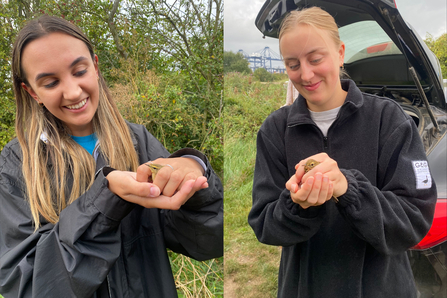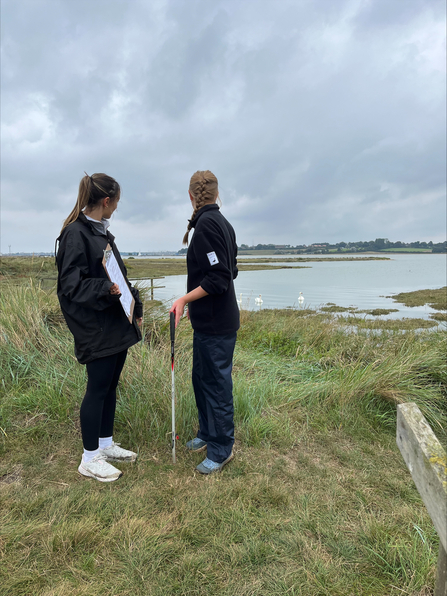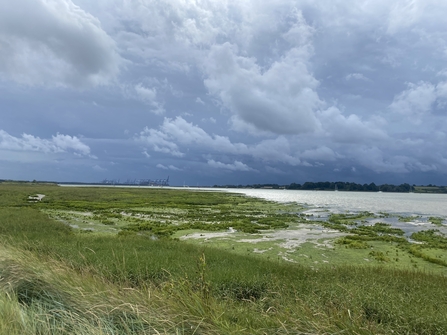The Great British Beach Clean is an event organised by the Marine Conservation Society, spanning from Friday 15th to Sunday 24th September this year, during which hundreds of beach cleans take place across the UK. As mentioned in last week’s blog post, we spent the first weekend visiting Trimley Marshes in Suffolk, where we assisted with the beach clean organised by Suffolk Wildlife Trust (SWT).
We arrived at the reserve ahead of the official start time to help Joe Underwood, the South East Suffolk Warden at SWT, set up ready for the arrival of volunteers. Before the beach clean commenced we had the pleasure of meeting Justin Zantboer, a birder and A-Ringer, who invited us to watch some bird ringing at Trimley Marshes. Justin talked us through the data taken, including location, species, wing length, weight, the fat and the pec check, and the ageing of the bird. Once the data is taken, a ring is then attached to the bird’s leg, which has a unique ID code. If the bird is recaptured at any point in its life, that code will allow you to see previous data and understand where the bird has travelled from, and if there have been changes in the bird’s health since it was last caught. After an insightful morning spectating the ringing process, Justin was kind enough to let us release some of the birds, which was great fun!




